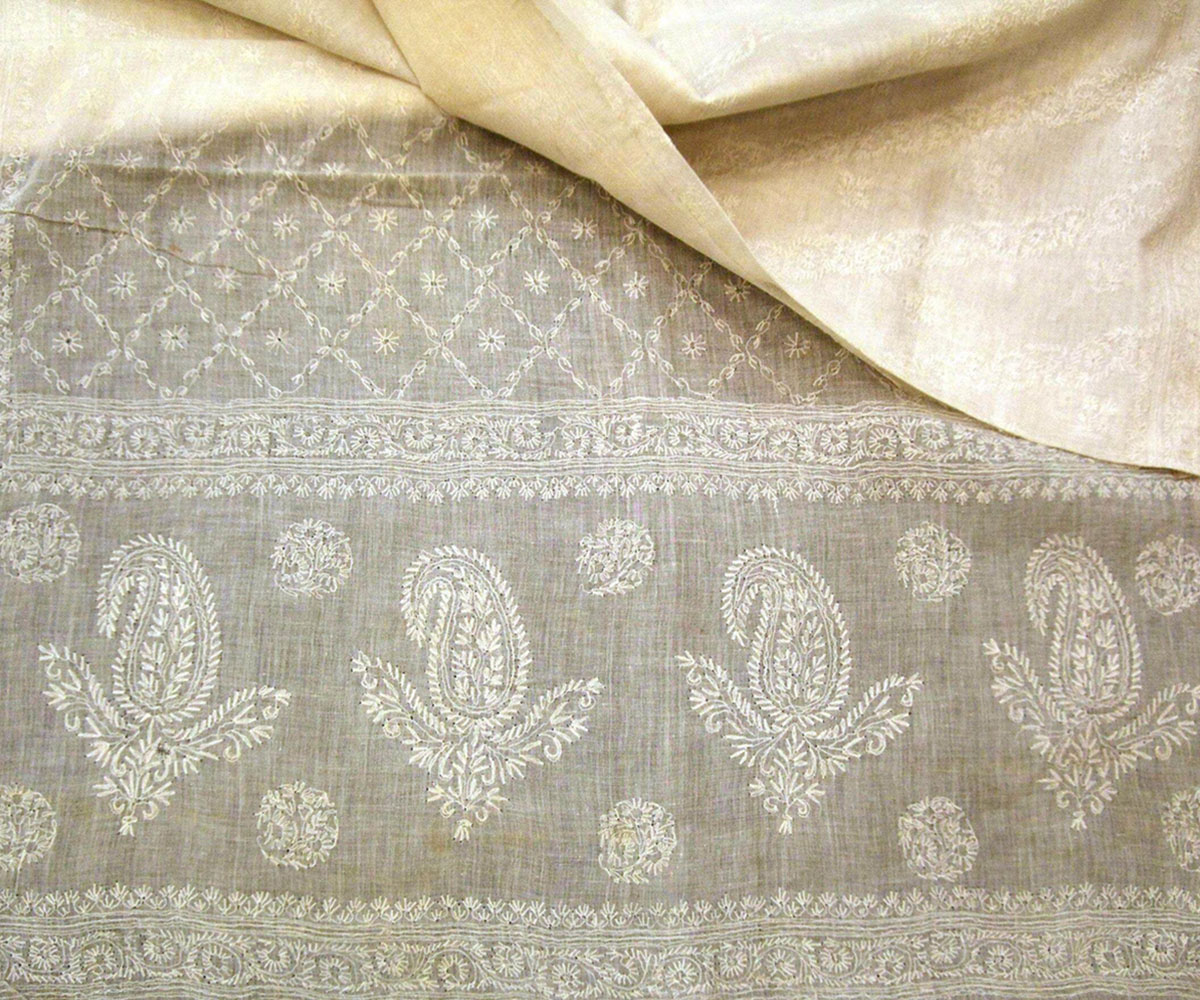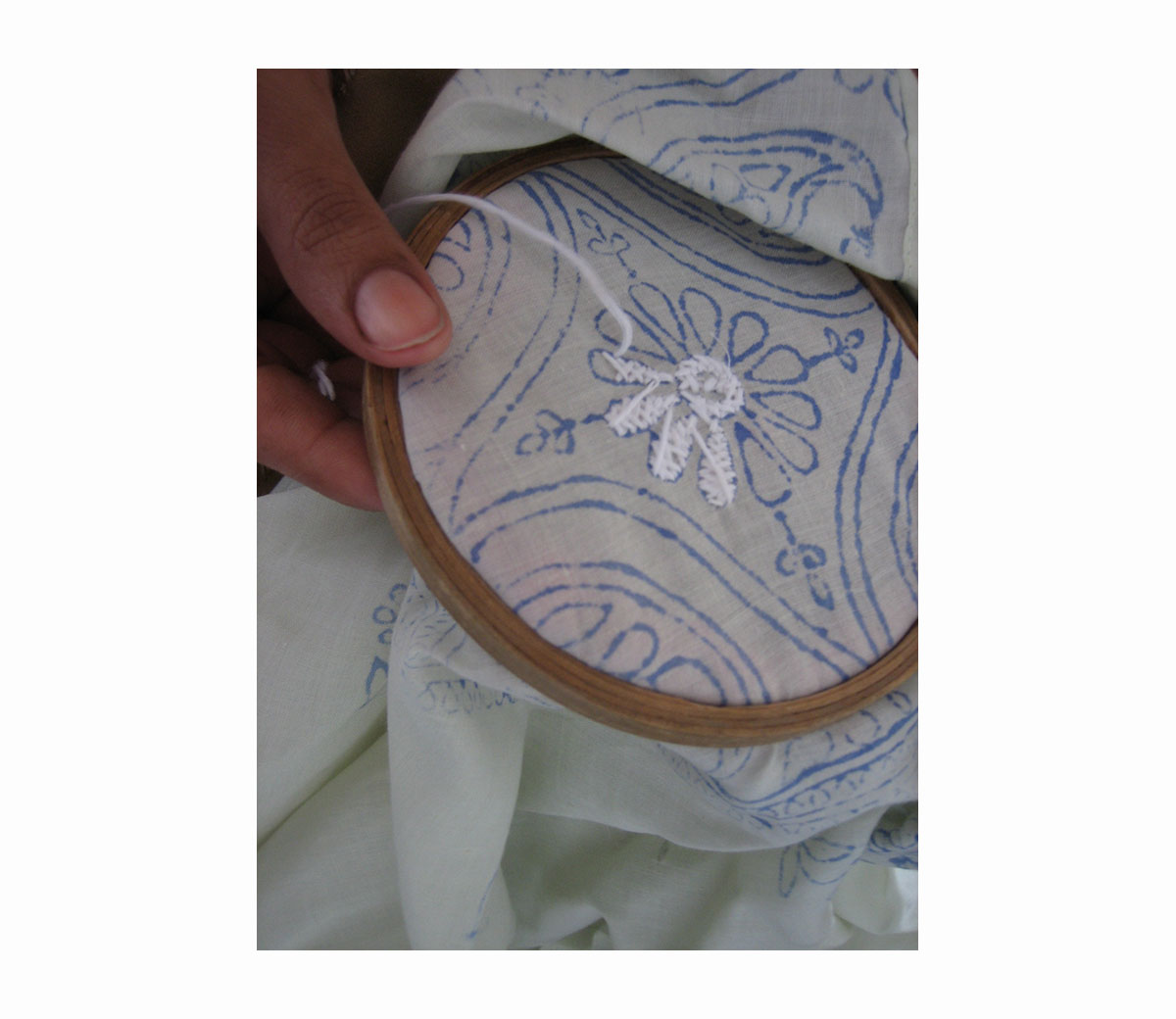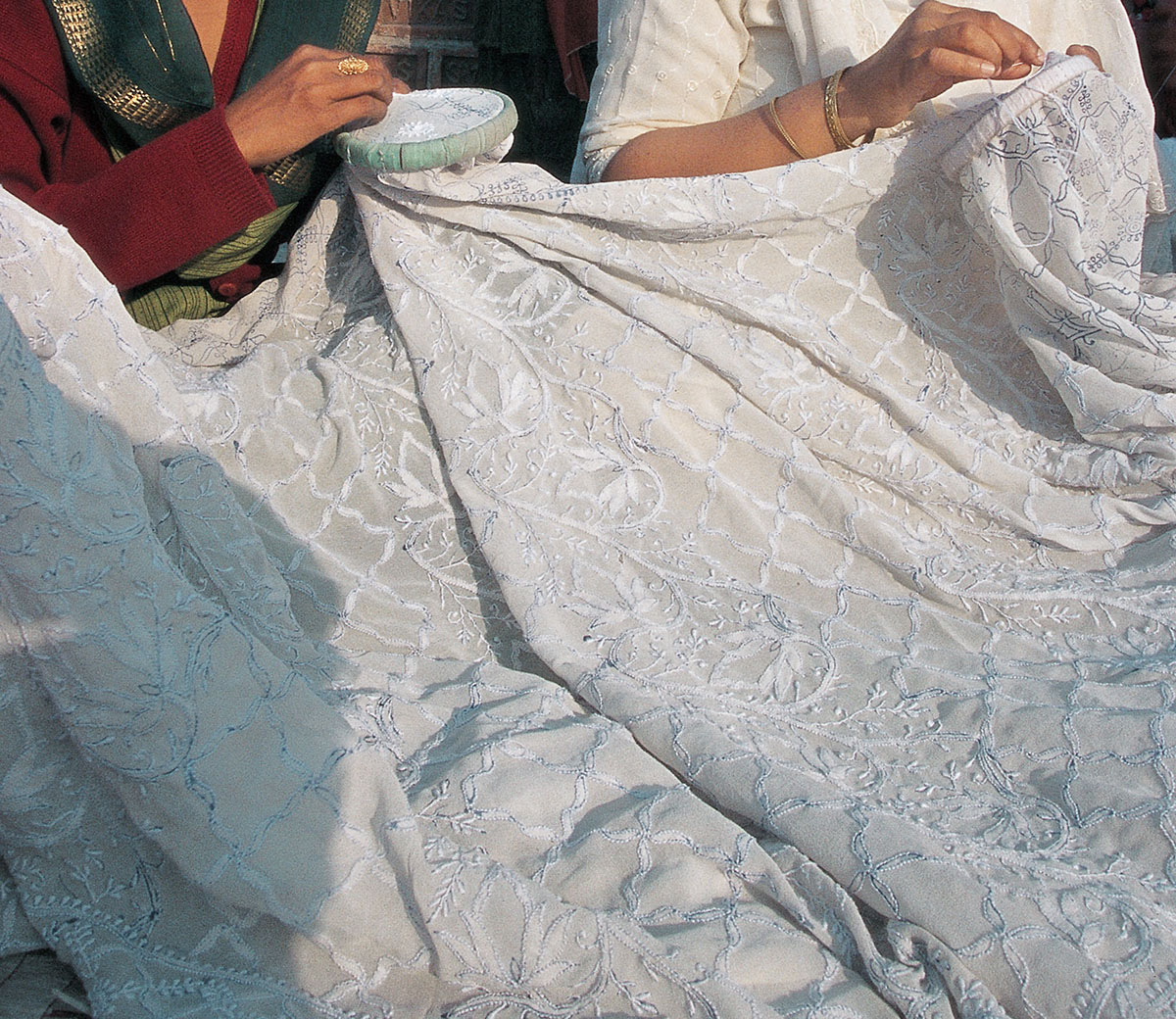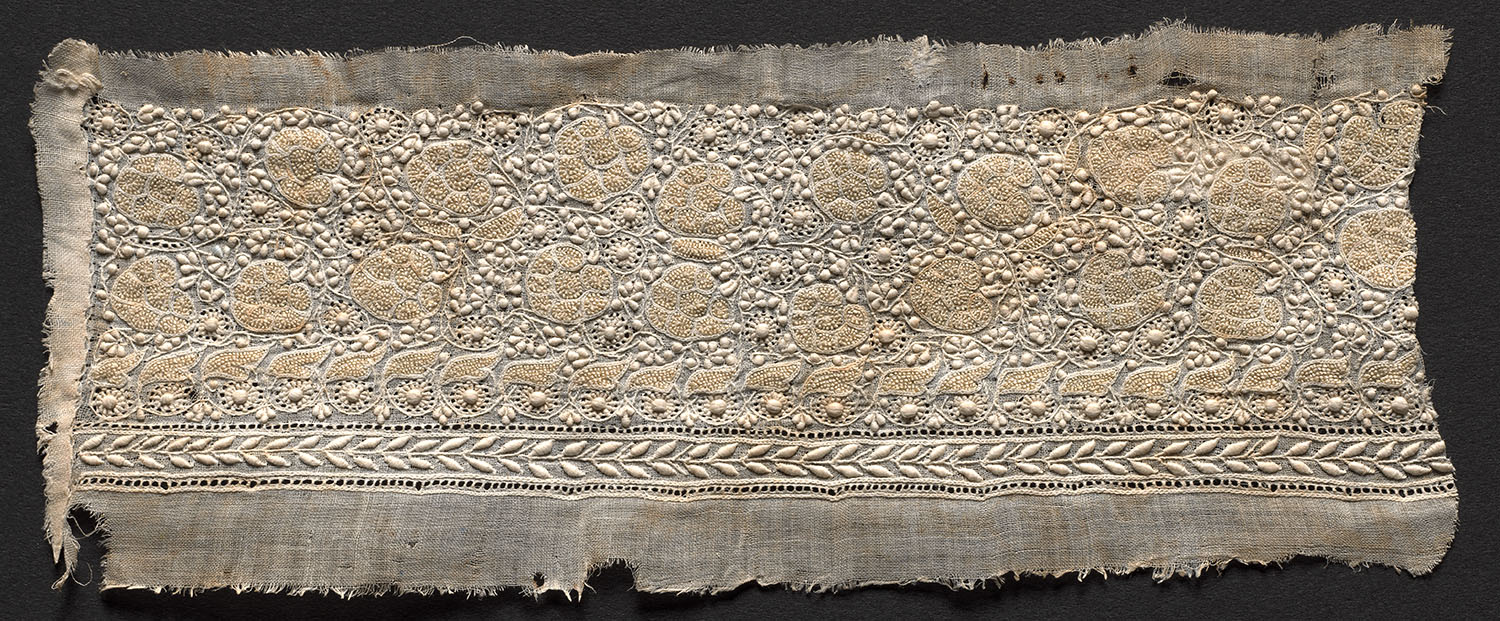ARTICLE
Chikankari
A form of hand embroidery associated with Lucknow, Uttar Pradesh, chikankari or chikan work, as it is popularly known, consists of intricate needlework in a variety of stitches, traditionally using white thread applied on white cloth. The origin of the word chikan is contested among scholars, who have traced it variously to Persian words chakeen (a coin with which artisans were paid) and chiq, the latticed screen for women in purdah. Chikankari employs at least thirty different stitches that can broadly be divided into three groups — flat stitches, raised or embossed stitches and jaali work. In its traditional form, it is similar to the European whitework embroidery, but has recently started incorporating coloured and silk threads.The embroidered cloth, and garments made from it, were once considered an epitome of luxury and refinement, enjoying the patronage of nobility and aristocracy of princely states.
As with the origin of the term, the historical origins of this practice are obscure due to the lack of evidence. Most scholars trace its origins to the rafoogars (cloth menders) of jamdani weaving, some also suggesting the link based on illustrations in Mughal miniatures. However, among its practitioners, the more popular origin stories are those that attribute it either to empress Nur Jehan or the Begum of Murshidabad. The earliest material evidence of chikan work is from the nineteenth century, when the main production centres were in Calcutta (now Kolkata), Dacca (now Dhaka), Peshawar (now in Pakistan) and Madras (now Chennai). It became popular in Lucknow around the same time under the patronage of nawab Nazir Ud Din Haidar and was soon appropriated by its artisans, who further developed the craft. The technique has since been used to create delicate motifs, such as bel and buti on garments, hats and household linen, most commonly covers for bolsters and cushions.
The production process for chikankari is divided into three phases — chapya (printing), tankha (embroidery) and dhulayi (washing). In the first, patterned wooden blocks are used to print designs on the fabric using temporary inks such as safeda and neel, which are washed off in the final step. In the tankha step, various stitches are selected, depending on the fabric and motifs to be embroidered. Specialist embroiderers handle different sections or types of stitch, which traditionally serve highly specific and non-overlapping functions. Among the flat stitches commonly used are zanjeera, a simple chain stitch used for the outlines; bakhiya, a satin stitch that is either made on the underside (ulta bakhiya) to produce a shadowy effect or on the facing side as a design fill; katao, a form of appliqué or patchwork; and jawaz, a kind of katao on the reverse side. Some of the raised and embossed stitches that characterise chikan work are murri, an elongated knotted stitch that has a grain-like appearance; phanda, a shortened, “millet-shaped” variation of the murri; and badla, a series of short satin stitches made over the outline of a motif. Flat and embossed stitches appear alongside jaali work,which involves making small perforations that are held taut by a series of stitches to resemble a screen or net. The jaali, which are thought to be inspired by the latticed screens or windows characteristic of Indo-Islamic architecture, are made in a variety of forms including haathkathi, bulbul chashm, makia, mandrazi, phool jaali and sidhaul jaali.
On average, an artisan must master four to five stitches out of thirty and train for at least fifteen years before they can achieve proficiency in the technique. A single chikan-work garment can take ten to fifteen days to make. The activity, which is undertaken in karkhanas or “workshops,” used to be a male dominated, but now is performed mostly by women.
Chikan work experienced a decline due to loss of patronage and its associated system of royal workshops as well as the emergence of a market economy. This was compounded by industrialisation and the introduction of less expensive and low-maintenance textiles. The 1980s, however, saw its first revival among the women artisans in Lucknow, where chikan work was promoted as a means to economic empowerment and livelihood improvement. Chikankari embroidery received the Geographical Indication (GI) status in 2008 and is protected under the Geographical Indications of Goods (Registration & Protection) Act, 1999 by the Government of India.
Bibliography
Our website is currently undergoing maintenance and re-design, due to which we have had to take down some of our bibliographies. While these will be re-published shortly, you can request references for specific articles by writing to hellomapacademy@map-india.org.










